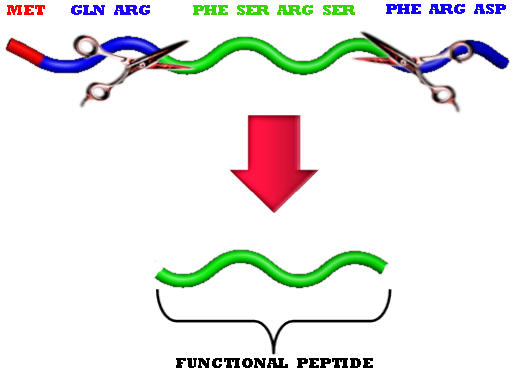Team:Imperial College London/M1
From 2009.igem.org

Contents |
 Module 1 Overview
Module 1 Overview
The E.ncapsulator has been designed to produce and deliver polypeptides (amino acid polymers) to the intestine. Module 1 encompasses the polypeptide production phase. During this period, our polypeptide of interest is synthesised at a rate sufficient to faciliate its accumulation inside the cell.
To demonstrate The E.ncapsulator's versatility, we have chosen to showcase it with both enzymes and peptides. These two classes of polypeptide have very different properties that we have considered and catered for in The E.ncapsulator's design.

About the difference between enzymes and peptides.


Peptide Delivery
Many peptide drugs are suseptible to breakdown in the stomach making them suitable candidates for encapsulation.
When synthesised, all polypeptides begin with the same amino acid: methionine. However, many polypeptides are subsequently chopped into smaller functional peptides that do not begin with methionine.
If we were to use natural polypeptide processing pathways, we would be forced to equip The E.ncapsulator with different enzymes for different polypeptides. We have avoided this inelegant solution and instead created a universal processing pathway that is compatible with all peptides. What is more, our system does not require the expression any additional genes!

About how our universal peptide processing system works.
Opiorphin
To showcase peptide delivery, we have selected the pentapeptide (five amino acids) opiorphin. This peptide is naturally found in human saliva and plays a role in pain relief and pleasure. The delivery of opiorphin by The E.ncapsulator, marks the iGEM first entry to tackle psychological problems such as chronic pain and depression.
Enzyme Delivery
To carry out their functions, enzymes must maintain their precise three dimensional conformations. Many enzymes denature in the acidic conditions of the stomach rendering them inactive. Even enzymes that survive stomach acid must face an assalt from stomach proteases. For these two reasons, enzymes are well suited for encapsulation. The E.ncapsulator has been showcased with two important enzymes: phenylalanine hydroxylase (PAH) and cellulase.
Phenylalanine Hydroxylase (PAH)

PAH converts one amino acid (phenylalanine) into another (tyrosine). PAH is normally found in the liver, however individuals lacking this important enzyme suffer from the genetic disorder Phenylketonuria (PKU). Individuals with PKU must limit their consumption of phenylalanine otherwise its accumulation can result in problems with brain development, leading to progressive mental retardation, brain damage and seizures.
PKU is currently tested for by genetic screening newborn babies. There is no cure for this disease, and current treatments revolve around following a strict low protein diet.

About PKU and current treatments.
Since PAH is usually found in the liver, it unsurprisingly lacks any natural resistance to proteases found in the intestine. In order to overcome this problem we introduced a mutation into the structure of PAH to increase its resistance to proteolytic degradation. The delivery of PAH by The Encapsulator is particularly relevant on two accounts. Firstly, it represents a landmark in metabolic subcontraction and secondly, it offers a treatment for a genetic disease.

About PAH and how we modified it.
Cellulase
Cellulose is a tough plant polymer assembled from glucose subunits. We commonly refer to undigested cellulose as 'dietary fibre'. While fibre has many positive effects on health, it also traps a number of nutrients preventing their absorption into the body. Cellulases are a family of enzymes that catalyse a series of reactions that result in the depolymerisation of cellulose. By delivering the cellulase Clostridium thermocellum Endoglucanase E (CelE) to the intestine, we hope to disrupt the cellulose polymer enough to release the trapped nutrients facilitating their adsorption.
While many cellulases have been identified, we selected CelE for two reasons. Firstly, it is protease resistant and secondly it is able to carry out multiple reactions that result in cellulase breakdown.
The delivery of a cellulase into the intestine offers a way in which we can enhance the nutritional value of food. This is an important consideration for a rapidly growing population with global food shortages.
| Next > Module 1: Genetic circuit |
 "
"





